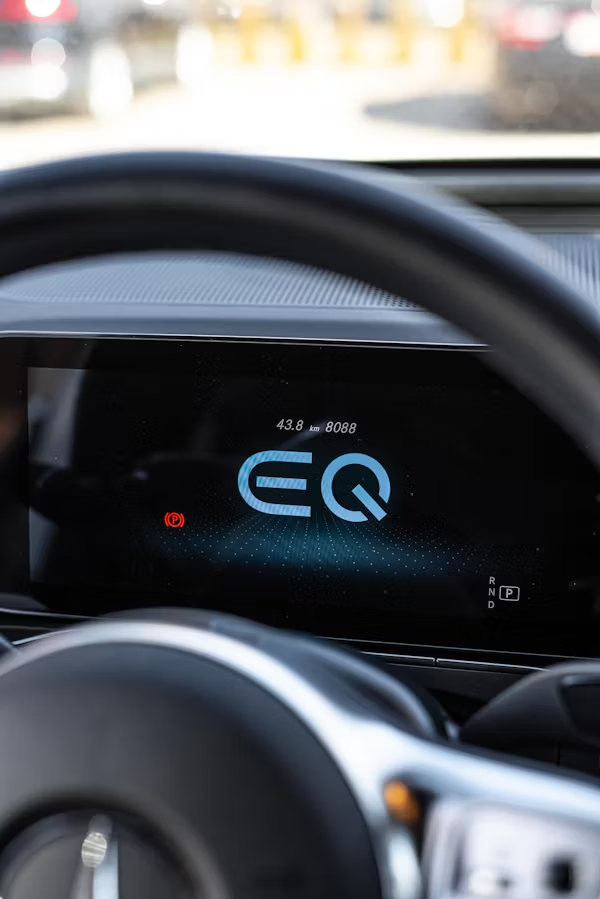Redefining India’s Luxury Automotive Future

Q1. Could you start by giving us a brief overview of your professional background, particularly focusing on your expertise in the industry?
I have spent nearly 25 years in the luxury automotive industry, working across India and international markets with both OEMs and dealer networks.
Throughout my career, I have worked with some of the most reputable international brands in strategic sales leadership, brand development, retail transformation, and customer experience improvement. I have managed multi-location dealership networks, spearheaded market development initiatives, and worked closely with OEMs to match brand strategy with retail implementation.
Over the years, I have navigated industry shifts—from combustion dominance to the rise of electrification—while building sustainable business models and deepening customer relationships. This experience has shaped my understanding of the interplay between product innovation, market trends, and brand desirability in the luxury segment.
Q2. How is the transition to electric vehicles reshaping the luxury automotive market in India, and what role does the electrification roadmap of some key competitors play in this transformation?
The transition to EVs is redefining luxury mobility in India by blending performance, sustainability, and cutting-edge technology into the ownership experience.
Since early adopters in the luxury market place a high value on uniqueness, creativity, and environmental awareness, electrification makes sense. Nonetheless, consumer awareness, policy incentives, and charging infrastructure all affect India's adoption curve.
Competitors with strong EV roadmaps—offering multiple models, advanced charging ecosystems, and brand-led sustainability narratives—are setting benchmarks and accelerating consumer acceptance. Their strategies, especially around localized assembly and after-sales readiness, push the market forward while compelling others to adapt quickly. The transformation is not just about drivetrain change—it’s about redefining luxury to include environmental leadership and connected mobility.
Q3. What trends are driving luxury vehicle demand among younger affluent consumers in emerging economies, and how are these markets influencing global luxury mobility strategies?
Younger affluent consumers in emerging economies are reshaping luxury mobility demand by prioritizing sustainability, technology integration, and experiential ownership over traditional status symbols. They expect seamless digital interfaces, autonomous-ready features, and a strong ESG alignment from the brands they choose. Global travel, cross-border exposure, and social media impact have increased their aspirations to meet worldwide standards. This market's demands for more localized innovation are impacting global strategies. Examples of this include:
• Region-specific design cues
• Subscription-based access
• Immersive retail experiences
OEMs are increasingly using emerging markets as launch pads for tech-forward models and urban mobility solutions, recognizing that these buyers will define the next two decades of luxury automotive consumption.
Q4. What role do strategic partnerships with tech firms, battery suppliers, and digital startups play in accelerating innovation and market penetration?
Rapid market penetration and shorter development cycles for luxury EVs depend on strategic alliances with IT companies, battery providers, and digital startups.
Advanced infotainment, AI-driven personalization, and autonomous features are made possible by tech partnerships, while safe access to state-of-the-art energy storage solutions is guaranteed by alliances with battery suppliers.
Younger consumers are drawn to digital businesses' immersive virtual retail tools, subscription structures, and predictive maintenance platforms.
Because they indicate the strength of the ecosystem and long-term viability, these collaborations not only accelerate innovation for premium companies but also boost consumer trust.
In an industry where the pace of change is unprecedented, no single player can master all technologies in-house—collaboration is the new competitive advantage.
Q5. What risks related to supply chain constraints, battery raw material costs, and regulatory uncertainties could impact luxury EV market growth?
The luxury EV market faces significant risks from supply chain fragility, especially around semiconductors and critical battery materials like lithium, cobalt, and nickel. Price volatility in these raw materials can erode margins, particularly when combined with the high R&D costs of luxury EVs.
Regulatory uncertainties, ranging from evolving emission norms to inconsistent state-level EV incentives, add another layer of unpredictability.
Geopolitical tensions can disrupt global sourcing networks, delaying deliveries and impacting brand perception.
Additionally, infrastructure gaps in charging networks, coupled with consumer concerns around range and service readiness, can slow adoption.
Mitigating these risks requires diversified sourcing, strategic stockpiling, and close engagement with policymakers to shape a stable, EV-friendly regulatory environment.
Q6. What innovations in materials science and sustainable components are being prioritized in the development of next-generation luxury vehicles?
Next-generation luxury vehicles are prioritizing innovations that reduce weight, improve efficiency, and enhance sustainability without compromising on performance or aesthetics.
Enhance the Range in EVs
Lightweight composites, recycled aluminum, and carbon fiber are increasingly used to improve range in EVs. Interior materials are shifting toward plant-based leathers, recycled textiles, and sustainably sourced woods, appealing to eco-conscious buyers.
Improved Design and Efficiency
Advances in solid-state battery packaging are influencing design flexibility, while improved aerodynamics and active cooling systems optimize efficiency.
Sustainable Manufacturing
Sustainable manufacturing—powered by renewable energy—has also become a key differentiator in brand storytelling.
These innovations are not only environmentally responsible but also reinforce luxury’s evolving definition: exclusivity that is both high-performance and ethically crafted.
Q7. If you were an investor looking at companies within the space, what critical question would you pose to their senior management?
If I were an investor evaluating companies in this space, my critical question to senior management would be:
What is your long-term strategy to balance electrification scalability with profitability, given raw material volatility, regulatory shifts, and technology obsolescence risks?
This can help leadership to articulate how they plan to future-proof the business while safeguarding margins. It touches on vertical integration, partnership strategy, product lifecycle planning, and adaptability to policy changes.
In the luxury segment, where brand equity is as critical as technology, investors must understand how a company intends to maintain desirability while navigating an industry that is transforming faster than at any point in its history.
Comments
No comments yet. Be the first to comment!
